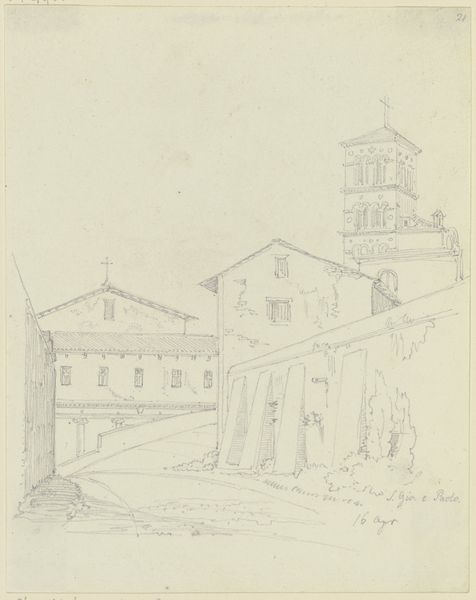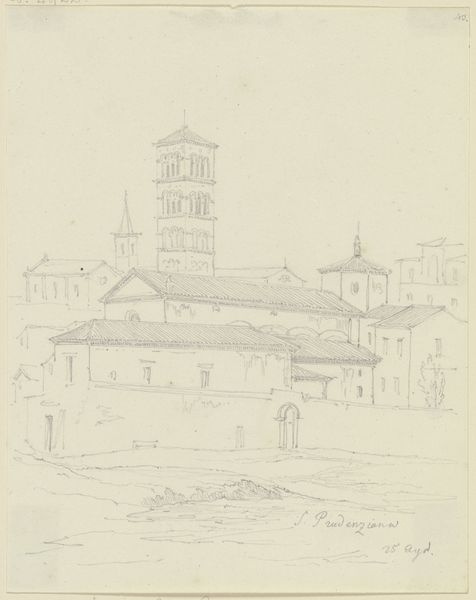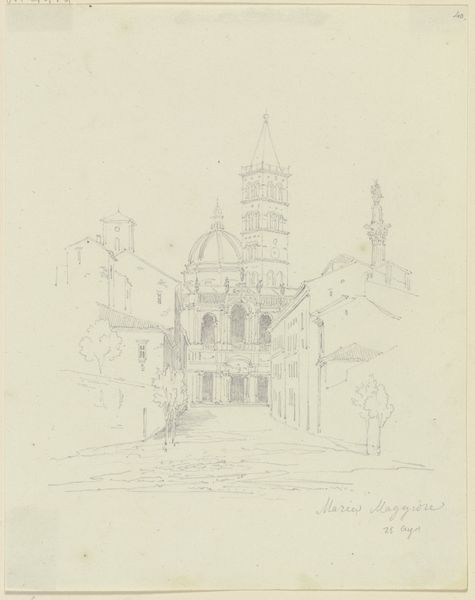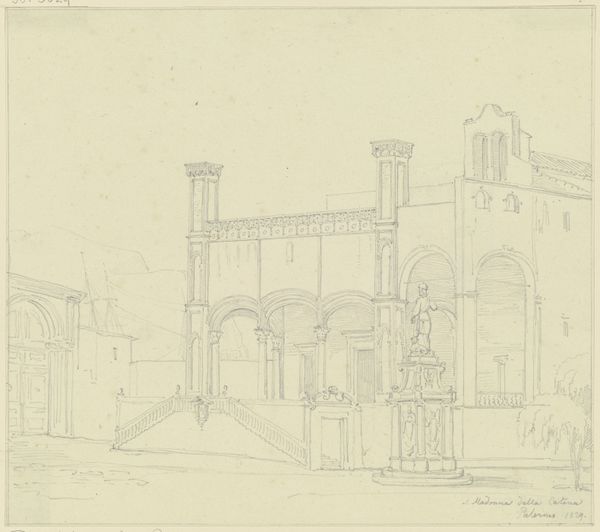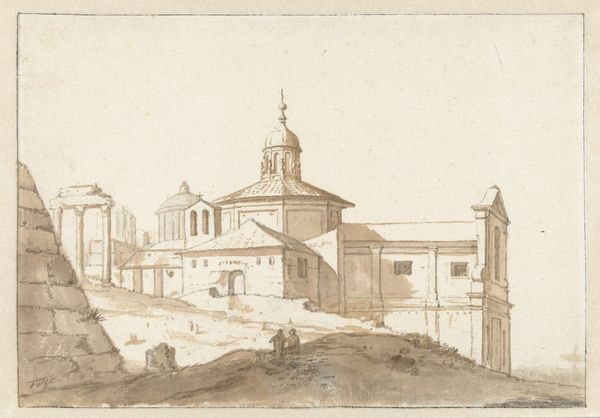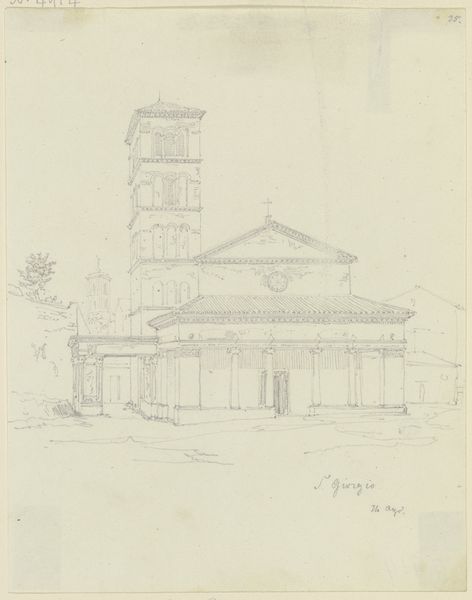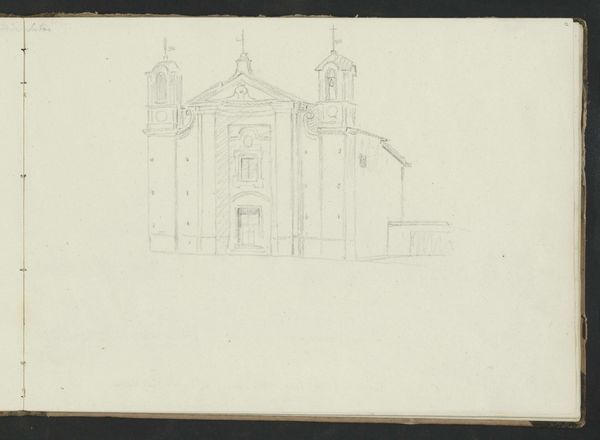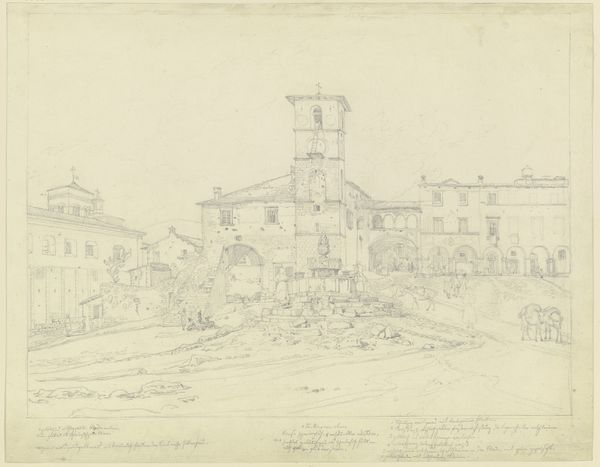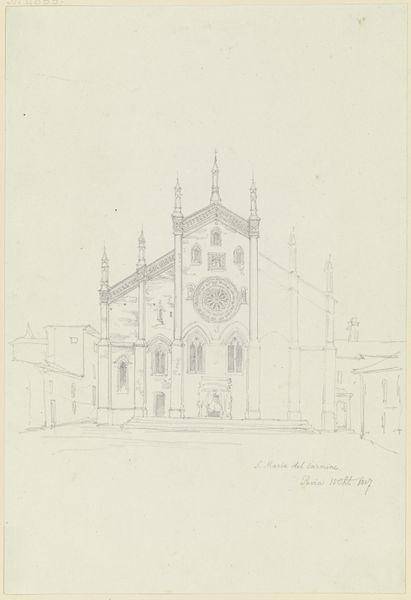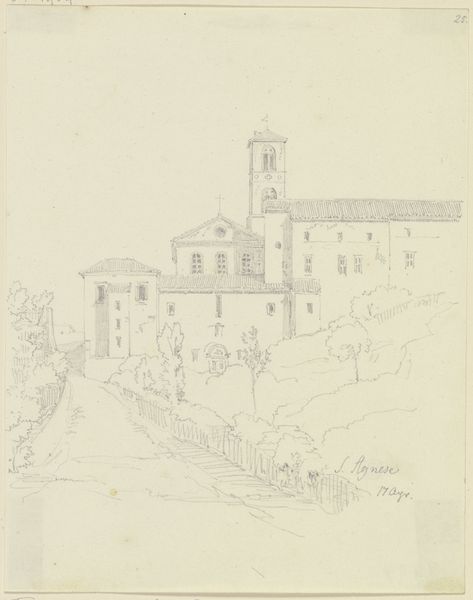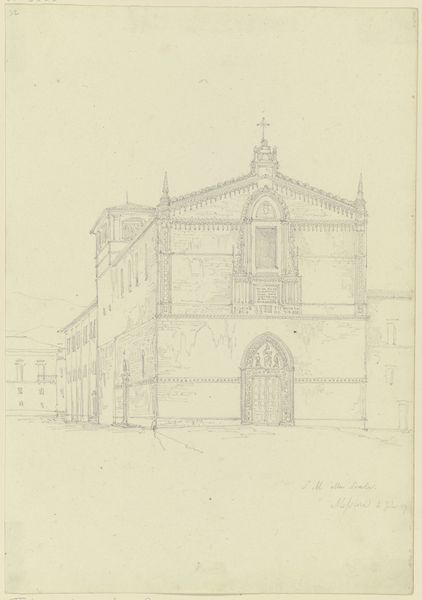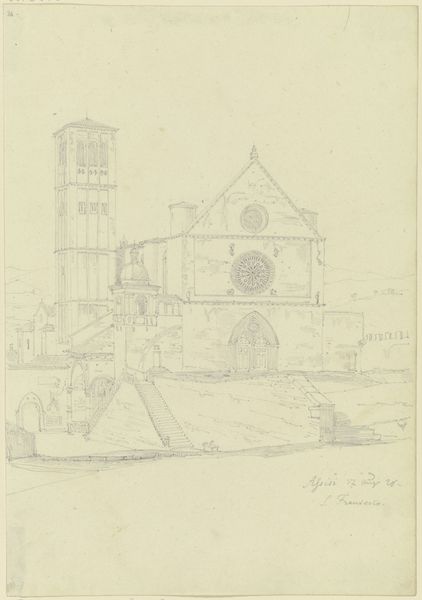
Copyright: Public Domain
Curator: Let’s delve into this fascinating sketch. It’s titled "S. Ambrogio in Milan," rendered by Friedrich Maximilian Hessemer in March of 1927. What’s your first impression? Editor: It strikes me as incredibly delicate. Look at the way the pencil traces the basilica's form; it speaks of careful observation, perhaps even a love for the materiality of the structure. You can almost feel the grain of the paper and the graphite crumbling with each line. Curator: Indeed. Hessemer was deeply immersed in architectural study. But let’s consider this within its historical moment: early 20th century, Italy under Fascist rule. How might that have influenced Hessemer's gaze? Was he deliberately turning towards a romanticized past as a quiet act of resistance? Editor: Possibly, or it could simply be the pursuit of aesthetic value during that timeframe. Given that this is an architectural sketch, perhaps process and material are more significant than symbolism here. The deliberate selection of pencil, the paper itself— these reflect a conscious decision about how to represent the structure and record its form. It’s about craft as much as commentary. Curator: However, to completely divorce it from the social context feels inadequate. We can look at the choice of subject - a symbol of Milanese identity for centuries – and its role for the identity formation by fascist rulers as part of their imperial agenda to evoke cultural memories that supported and legitimized Italy’s colonial ambitions in Africa. Editor: That’s a fair point. Though, even then, the act of sketching itself is crucial. How Hessemer physically interacted with the paper, the pressure he applied, the way he captured the light—these choices communicate the significance of materials and process in the context of mass production and industrialisation. Curator: I agree. Hessemer is using an older architectural style to remind its viewers of a connection with a bygone era. It almost certainly makes this artwork about the cultural construction of both German and Italian identities, which goes on to play an even more crucial role as World War II approached. Editor: Seeing this sketch as part of that historical context really makes me reconsider its function, how the medium shapes and reshapes it. I find it is amazing to consider the role this sketch has for the reconstruction of social narratives of this period. Curator: It is indeed enriching to interpret architecture as social narratives. It's fascinating how this humble pencil sketch prompts such layered questions about material and socio-political context. Editor: Absolutely. It's a reminder of how the value of process and material considerations can allow us to consider this historic building within contemporary theory and history.
Comments
No comments
Be the first to comment and join the conversation on the ultimate creative platform.

